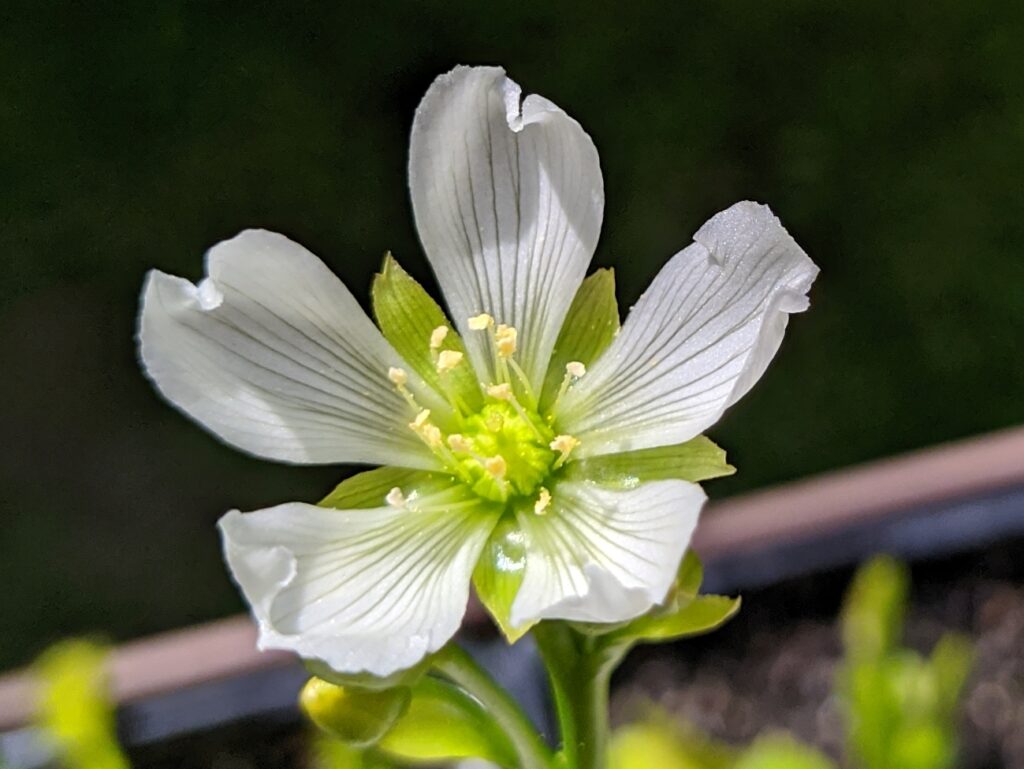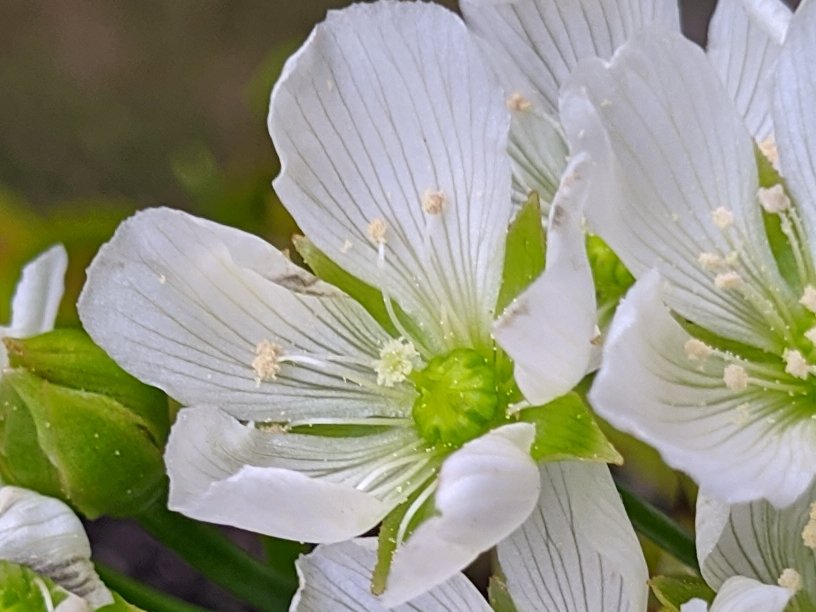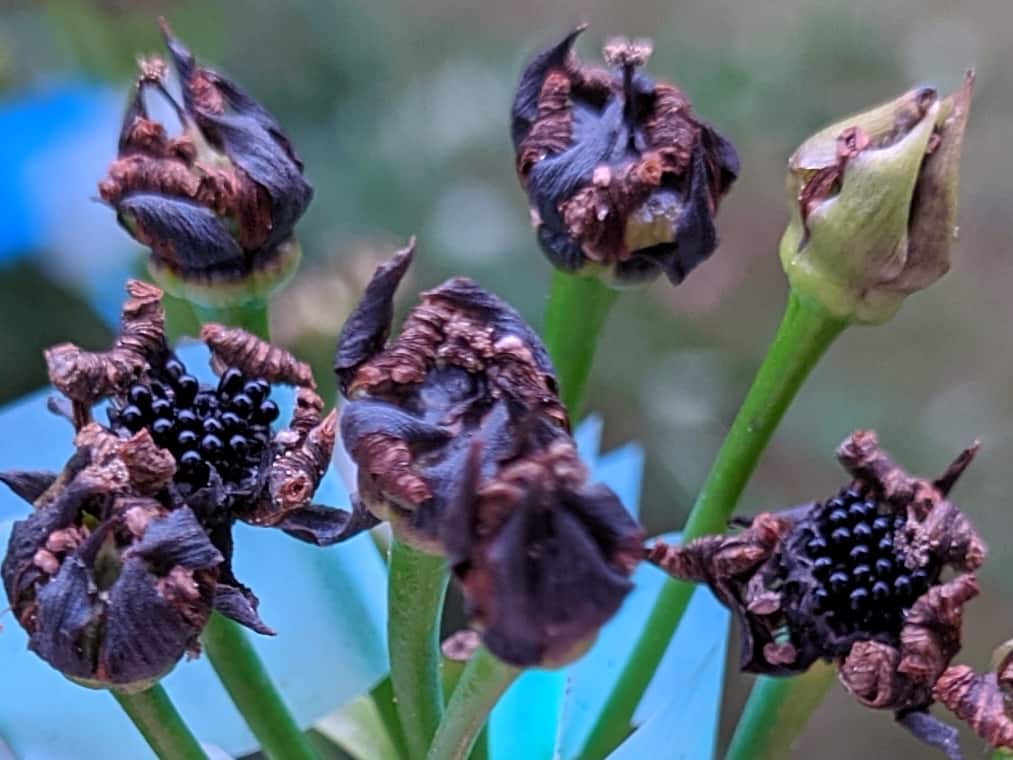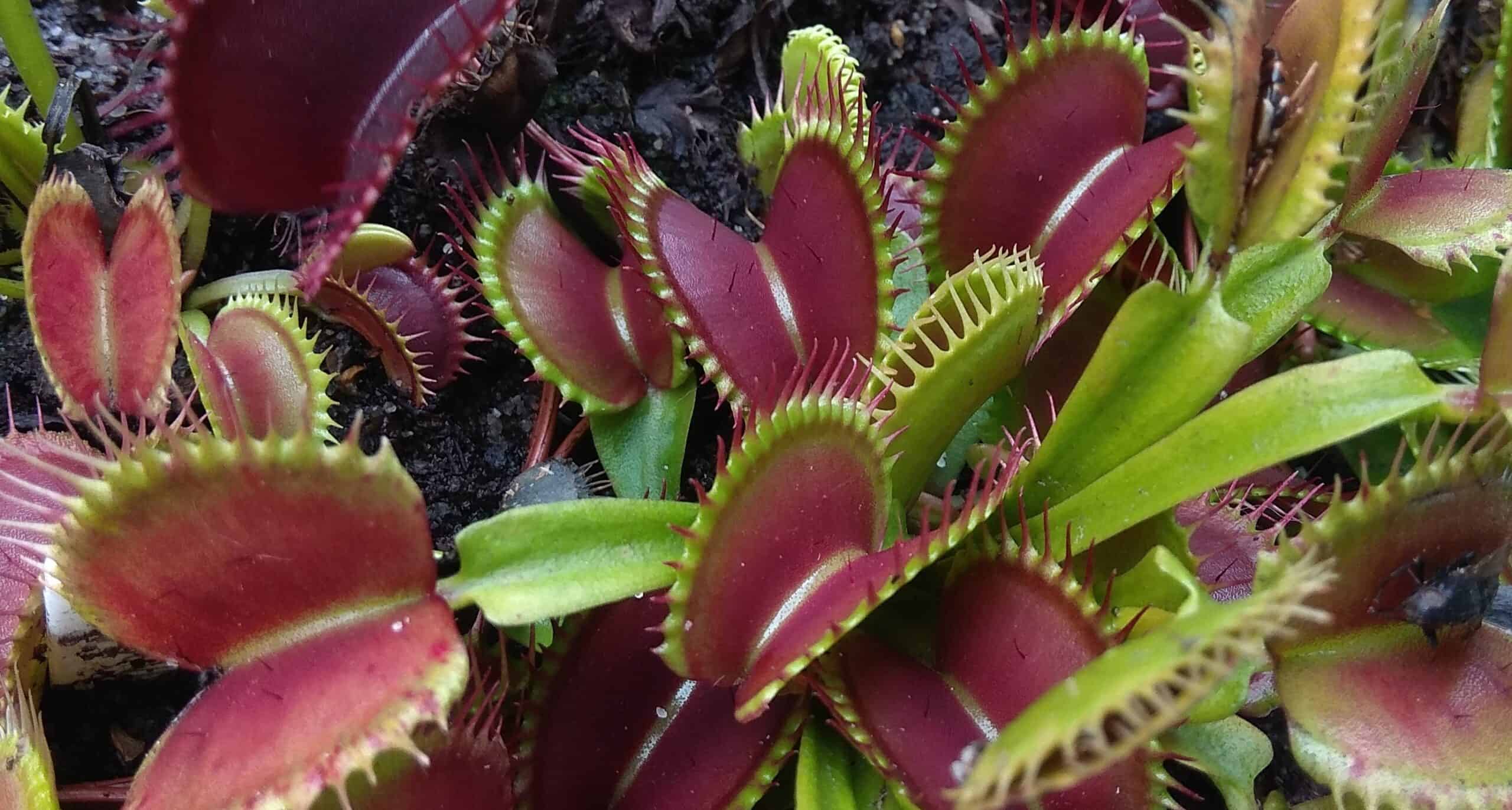How to pollinate Dionaea Muscipula (Venus Flytrap)
If, like me, you desire to obtain your own Venus flytrap seeds, I’ve created a guide on how to pollinate Dionaea Muscipula (Venus Flytrap). It’s important to note that you’ll need two genetically unrelated plants. However, based on the experiences of many growers, it’s possible to obtain seeds even through self-pollination of a single plant. Most plants have been crossbred multiple times, which reduces genetic issues.
Another crucial point is that flowering can weaken the plant. If the plant is not in good condition, it’s better to cut off the flower to prevent potential failure and loss of the plant.
The Venus flytrap produces very beautiful, white, veined flowers. In the image, a freshly opened flower is shown. For pollination itself, the most critical part is the clusters of pollen located on the yellow tips of the stamens in the center of the flower.

On this photo, the flower is shown on the second day. The stamens have moved to the outer edge of the flower’s interior, revealing the pistil with its stigma in the center.

To pollinate a Venus flytrap, you need to collect pollen from the stamens (as shown in the first photograph) and transfer it to the stigma (shown in the second photograph). This can be done using a small brush or tweezers.
Venus flytraps have a mechanism to prevent self-pollination. Initially, the stamens with pollen are accessible in the open flower, but the pistil only becomes exposed later. By the second day, the pollen is usually no longer present on the stamens, making self-pollination impossible. Therefore, the best option is to transfer pollen from a freshly opened flower to an older flower on another plant.
After pollination, the flower will close and gradually turn brown. If the pollination was successful, after a few weeks, the flower will open, revealing small, black, shiny seeds.


